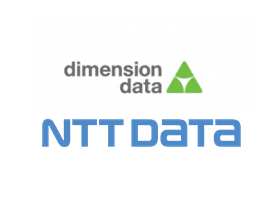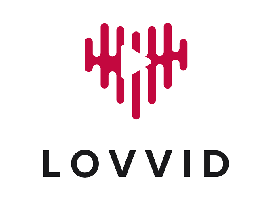How can I extract added value from my company data using data analytics?
– A guide. –

In today’s digitalized world, companies generate huge amounts of data every day which, if analysed correctly, can provide crucial insights into business processes, customer behaviour and market trends.
Data analytics is the key to generating real added value from this data.
In this guide, you will learn how you can use data analytics to make profitable use of your company data.
1 What is data analytics?
Definition and meaning:
Data analytics refers to the systematic computer-aided analysis of data in order to extract information that can lead to well-founded decisions. It is not just about collecting and managing data, but about analyzing this data in such a way that it becomes valuable for the company.
Types of data analytics:
- Descriptive analysis: What happened? (e.g. sales reports, trend analyses)
- Diagnostic analysis: Why did it happen? (e.g. root cause analysis of sales slumps)
- Predictive analysis: What could happen? (e.g. sales forecasts)
- Prescriptive analysis: What should be done? (e.g. recommendations for action based on analyses)
2. steps towards value creation through data analytics
Step 1: Data collection and management
A solid database is a prerequisite for successful analyses. This includes identifying relevant data sources, integrating this data into a central database and ensuring data quality.
- Data sources: Internal (e.g. sales data, customer feedback) and external (e.g. market trends, social media)
- Data integration: Use of ETL processes (Extract, Transform, Load) to merge data from different sources into a consolidated data set.
- Data quality: Ensuring that the data is clean, complete and up-to-date.
Step 2: Data analysis and modeling
Once the data has been collected and processed, the analysis follows. Various analysis techniques are used here to identify patterns and correlations.
- Statistical analysis: investigation of correlations, regressions and distributions.
- Machine learning: Use of algorithms to make predictions or classifications.
- Visualization: Presentation of the analysis results in an understandable form, e.g. through diagrams or dashboards.
Step 3: Interpreting the results
The analysis provides raw data that needs to be interpreted in order to derive business insights. It is important to consider the results in the context of the company’s objectives and to identify potential action steps. Step 4: Implementation and monitoring
The insights gained from the analysis must now be translated into concrete measures. It is crucial to continuously monitor the effects of these measures and make adjustments where necessary.
3. concrete use cases of data analytics in the company
Optimization of marketing:
By analysing customer data, companies can create personalized marketing campaigns that are precisely tailored to the needs and behaviour of their target group. This leads to higher conversion rates and improved return on investment (ROI). Increasing efficiency in production:
Data analytics can be used to optimize production processes. By analyzing machine data, for example, maintenance intervals can be predicted and downtimes reduced, leading to an increase in overall productivity. Improving customer loyalty:
By analyzing the behaviour of their customers, companies can develop targeted customer loyalty measures. For example, a company can use predictive analytics to identify customers at risk of churning and proactively make offers to retain them. Risk management:
Data analytics can identify and minimize risks in various business areas. For example, by analyzing transaction data, financial institutions can detect suspicious activity at an early stage and prevent fraud.
4. success factors for the implementation of data analytics
Build data expertise within the company:
The implementation of data analytics requires trained personnel who have both the technical and analytical skills to use data effectively. Companies should therefore invest in training and further education. Technological infrastructure:
A high-performance IT infrastructure is essential for processing large volumes of data and carrying out complex analyses. This includes both hardware (e.g. servers, storage solutions) and software (e.g. databases, analysis tools). Culture of data-driven decision-making:
The success of data analytics depends largely on how strongly data-driven decisions are anchored in the corporate culture. Managers must recognize the value of data and integrate it into decision-making processes.
5. challenges in the use of data analytics
Data quality and silos:
A common problem is the poor quality of data or the fact that data is isolated in different departments. This can make analysis more difficult and lead to inaccurate results. Data protection and compliance:
With the increasing use of data analytics, data protection requirements are also rising. Companies must ensure that they comply with legal regulations and protect sensitive data from misuse. Complexity of analysis:
The interpretation of analysis results can be complex, especially when various factors interact with each other. Companies therefore need experts who are able to manage this complexity and make informed decisions.
6. conclusion
Through the targeted use of data analytics, companies can derive considerable added value from their data. Whether it is about optimizing marketing strategies, increasing efficiency or minimizing risks – the possibilities are manifold. However, in order to fully exploit this potential, it is important to invest the right resources and establish a data-driven culture within the company. The experts at BITS GmbH are on hand to help you introduce and optimize your data analytics strategy. Contact us for a comprehensive consultation and let’s maximize the added value of your data together.
Further guidelines & best practices
CONTACT
Would you like to find out more?
Are you interested in learning more about the possibilities of digitization in your company? Are you facing similar challenges or have you planned specific projects in your company? Please contact us for a detailed consultation.
Send us an e-mail directly to [email protected] – we look forward to working with you to shape the future of your IT landscape!
You can also make an appointment directly in our calendar.
OUR CUSTOMERS AND PARTNERS
OUR CUSTOMERS AND PARTNERS
Together, reliably and in the long term, we as an IT service provider want to support you in your IT projects. A selection of our customers, partners as well as industries can be found in this section.







































